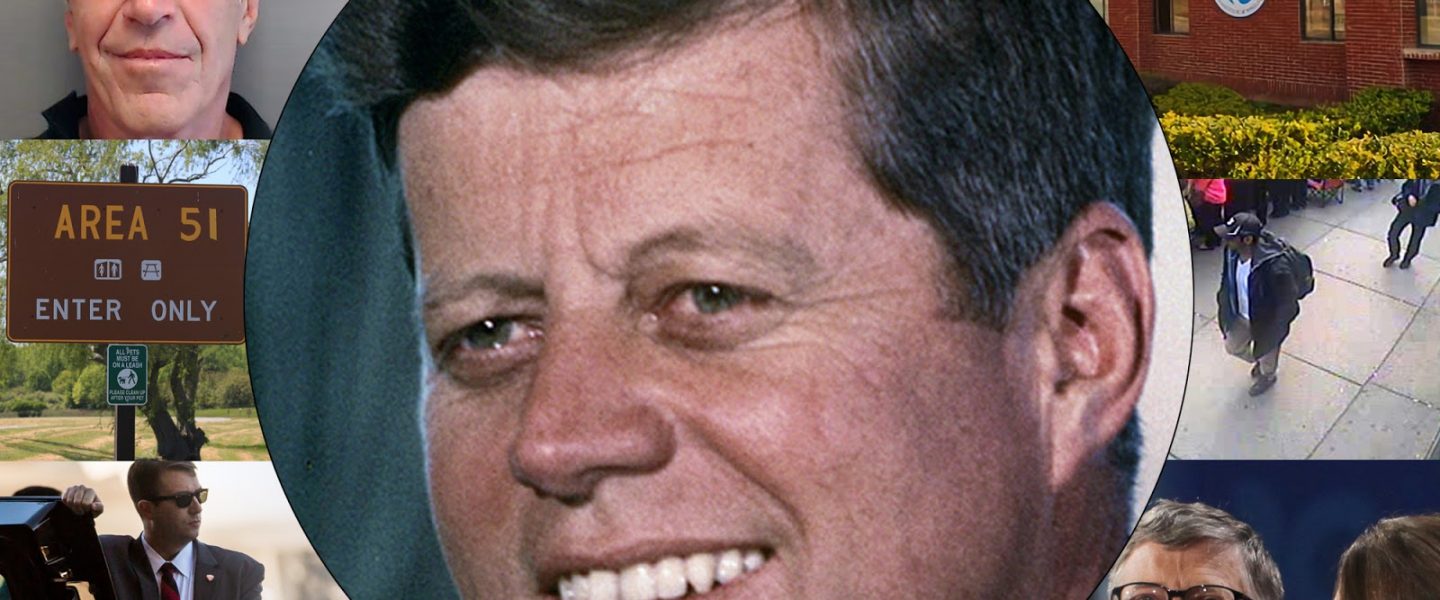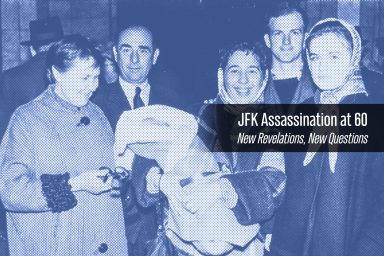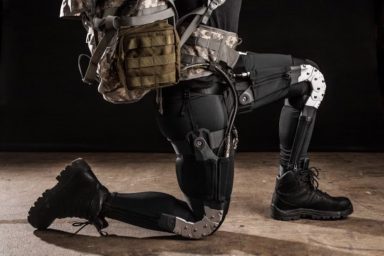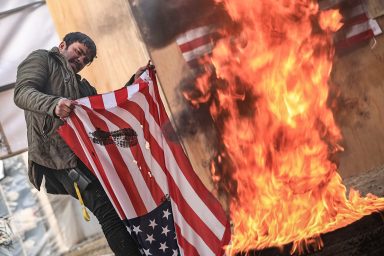One of the original JFK assassination investigators breaks down the 58-year-old case into its basic parts.
While we’ve probably known it for a long time, lately we are finding out more and more that things are not what they seem. Or at least not as they were reported.
We were told that nothing leaked from a lab in Wuhan… but that was yesterday. We were told that Jeffrey Epstein killed himself while under surveillance at all times… except that now we know he wasn’t. We were assured that UFOs were a figment of our imagination, until the Pentagon changed its mind. We were so impressed with the diligence of the Secret Service, until we learned they are hardly the group you want to trust your life with. We were told Bill Gates was a pillar of the world community… until we discovered he is not. Not to mention 9/11, the Iraq war, and the Boston bombing. And perhaps the progenitor of all of this kind of misdirection concerns the assassination of President John F. Kennedy.
Kennedy would have been 104 years old tomorrow. Given our newfound appreciation that things are not necessarily as they are first reported — it’s perhaps a good time to once again go back and take a look at the tragic events in Dealey Plaza on November 22, 1963.
In this week’s WhoWhatWhy podcast, we talk with Josiah Thompson, one of the original Kennedy investigators and author of Six Seconds in Dallas. In his new book, Last Second in Dallas, he provides what he calls a “clearing” of all the bad information, and a reaffirmation of the simplicity of what we actually know.
Thompson, a former professor and long-time private investigator, engages us in a historical detective story as he takes us through a step-by-step examination of what really happened. He shows us a fact pattern that can only lead to one conclusion: a consipiracy of several people, whoever they were, cooperated to murder Kennendy.



Click HERE to Download Mp3
Full Text Transcript:
Jeff Schechtman: Welcome to the WhoWhatWhy Podcast. I’m your host, Jeff Schechtman. Next week would have marked the 104th birthday of John F. Kennedy. Historians are still occasionally debating the political impact of his short presidency. But the debate still goes on as aggressively and seriously as ever about the death of Kennedy — the theories abound, experts and participants have died, and technology has both clarified and confused some of the evidence. But amidst all the noise, even today 58 years later, it’s still possible to boil down the essential known facts and the profound, and sometimes obvious, still unanswered questions surrounding the murder.
Helping us to do that today, I’m joined by Josiah Thompson. Josiah Thompson has investigated numerous high-profile murder cases during his 35-year career specializing in criminal defense. Thompson is a former professor turned detective, he is the author of several books, and his latest is Last Second in Dallas. It is my pleasure to welcome Josiah Thompson here to the program. Josiah, thanks so much for joining us.
Josiah Thompson: Great to be here, Jeff.
Jeff: It’s great to have you here. The first thing I have to ask you is how you got involved in the business, even as an investigator, how you got involved in the business of looking into the Kennedy death?
Josiah: I got arrested. [chuckles] That’s how I got involved. This was a long time ago. It was January 1966, and the sheriff of Delaware County, a neighboring county to Haverford College where I was teaching at the time, put out the word that, ‘If any of these peaceniks come into my territory, I’m going to bust them.’ Now, peaceniks referred to people who were against the war in Vietnam at that time. So another professor and I went over and handed out leaflets in Delaware County. The leaflets were from the American Friends Service Committee. We were arrested for littering and locked up in the local jail, and kept for a number of hours until the ACLU attorney arrived.
The ACLU attorney did a masterful job of bluffing. I can still remember it; it was so good. The other professor and I were brought out into the squad room, and all the cops are gathered around the periphery, and the attorney looked at his watch first, this wonderful stage gesture, looked at his watch first, and then said, ‘Well, we’ve contacted Attorney General Katzenbach and when the FBI arrives,’ looks at his watch again, ‘in a few minutes, I want you to tell them, in addition to your civil rights being violated by the police here, that in addition you’re suing for false arrest. Lieutenant so and so, sergeant so and so,’ blah, blah, blah.
We were out of there in 40 seconds. The ACLU lawyer was Vincent J. Salandria, one of the greats of the early generation of critics, the one guy who did a masterful job of interpreting the evidence in obscure left-wing periodicals of the time, such as Minority of One and Liberation Magazine. That’s how I met Vince Salandria. Vince Salandria brought me under his umbrella, and we ended up going to Washington on countless occasions to the archives to begin work on this.
Jeff: What was his point of view towards the murder, initially? What were his ideas? What was his theory?
Josiah: I can’t tell you what his theory was because I don’t think Vince ever articulated it into a series, say, of what happened in Dealey Plaza. He was fairly quick to move to the global picture, to the big picture that the CIA did it, or some intelligence agency did it, or that this was a coup in America, etc., etc. Vince and I were going to write a long magazine article in 1966 and ‘67. That was in the summer of 1966. As usual, among critics of the Kennedy assassination, we broke up over a matter of interpretation.
Jeff: The disagreement over interpretation that you had had something to do with the bullet hole in Kennedy’s throat, etc.?
Josiah: I’m not sure of the details of who said what at this point. But I think this is an excellent example because I want to tell you now, 50 years on, I don’t think there is any satisfactory explanation for what happened there. I think all the various explanations, and there’re basically two — one is that he was shot from the front and that that was the entry hole for a bullet; I don’t think that works at all. Or secondly, that a bullet entered his back lower than that and ended up coming out there; I don’t think that would work either. So I think this is a great example of a point that is often forgotten.
I think lots of people, Jeff, believe that what you have to do in the Kennedy assassination is answer every evidentiary question. At least this applies to what happened in Dealey Plaza. It has to be able to answer satisfactorily every evidentiary question. No way. Look, I’ve been dealing with murder cases and investigating murder cases since 1976 and ‘77. You don’t get that kind of comprehensiveness. I don’t think there’s a single murder case I worked on during all those years where we had all the questions and all the answers. You just don’t get anything like that.
Jeff: Isn’t one of the differences, though, that in a murder case and in a real trial, and you can speak to this, that there may not be an answer to all the questions, but it is clear obviously to a certain extent who did or didn’t commit the crime? In this case, there still may not be clear evidence of what exactly happened, and all the questions may not be able to be buttoned up, but what’s troubling in that framework is the lack of clear evidence or using the evidence to determine who committed the crime.
Josiah: Let me answer it in this way. Imagine yourself that you’re the chief counsel in a murder case, and you’re meeting with your chief investigator, and you got the case two weeks ago. And you’re starting to figure out what the defense should be and how it should be run. You have all these questions out there that might be answered, but you don’t have the resources to answer every question, so you have to choose. How do you choose what questions that you want to answer and that you will then release your investigator on?
Here’s how it goes. You sit with your investigator, and you and he figure out what of these questions would really sweep the jury into your arms, into believing the defense case. Some questions are much more important than other questions. If you can answer those questions, they would have a really remarkably energetic effect on the minds of the jurors. Now, with the great attorneys, they’re almost artists about this, or they’ve got a good nose for where the real persuasive questions lie. I’ve done that in case after case, that somehow right at the beginning your favor will assure an acquittal in the case of your client.
That’s the way it works. And that same thing can be applied to the Kennedy case. I decided very early, in looking at the Kennedy case, that the question I wanted to answer was really the threshold question because if this question was answered in the affirmative, it would show that this whole tangled argument as to whether the Warren Commission was right in saying a single shooter did this, or whether others were right in claiming that a conspiracy was involved in the Kennedy assassination. I never believed that you’re going to answer that question by looking at conspiracy because any intelligence operation, and this could have been an intelligence operation, again, ends up in covering itself with ambiguity.
Black is white and white is black, and going down that route, that road, to end up in ambiguity. So I decided that the only way to go about this in the Kennedy assassination was to look at what happened in Dealey Plaza. Here you’ve got hundreds of witnesses, many law enforcement witnesses, many ordinary citizen witnesses, and you’ve got maybe 30 people taking photographs of it in a public square. Surely, out of all that evidence, you ought to be able to distill a picture as to what happened.
I thought that, ultimately, the threshold question in the case was whether bullets came into the limousine from more than one direction. If they did, then it seems to me the single assassin theory, the whole Warren Commission shebang, that whole thing could be committed to the dustbin of history. On the other hand, if you couldn’t show that, if there was ambiguity about whether shots came from more than one direction, then that ambiguity would hold, and it would be extremely difficult to convince any reasonable person that there had been a conspiracy if you couldn’t show it raising its head in Dealey Plaza.
Jeff: How did you then go about trying to arrive at one of these conclusions?
Josiah: By 1966, there were the 26 volumes, 26 volumes of Warren Commission hearings and exhibits. In the summer of 1966, Vince Salandria and I would go to Washington, and we would visit the main reading room in the National Archives, and Marion Johnson, the archivist, would deliver the latest releases, the latest declassifications of documents from the Warren Commission files. There was an enormous amount of evidence, largely about what happened in Dealey Plaza. That evidence had to get processed through the question of, was there one firing point or were there many?
Jeff: Over time, more evidence and more technology entered into the equation with things like sound and the way that was interpreted.
Josiah: What’s been called the acoustics evidence, that was discovered in 1977 and ‘78 by the House Select Committee on Assassinations. That was not through any new technology. The technology of acoustics had been around for a long, long time as have almost all the basic rules of acoustic. That’s not new science, it’s really old science applied to this case.
Jeff: Talk about how that got applied to this case as you see it.
Josiah: Actually, I was in the room when it was made known to Bob Blakey, the Chief Counsel of the House Select Committee on Assassinations. It was in September 1977 and Blakey had convened a conference of major critics of the assassination. Sylvia Meagher was there, I was there, a whole bunch of other critics were there, maybe 12 to 15 of us at that time. It was a hot September day in Washington, and I found myself falling asleep after lunch, which was an odd thing to do because for years I’d been working with other folks to get the case reinvestigated. Now it was getting reinvestigated and what do you do, Thompson, you fall asleep in the hearing room. [chuckles] My God.
At the end of the day, Mary Ferrell, a wonderful, sharp-eyed and -eared legal secretary from Dallas spoke up and said to Bob Blakey, the chief counsel, that, ‘Mr. Blakey, I have this radio guy. This radio guy came, and he brought these tapes of the Dallas Police radio.’ And they’d been gone over, cleaned up by one of the radio stations here in Dallas. ‘And he said, and other people said, that you could hear shots on them, that there were actual shots on them.’ This was a surprise to all of us. I looked at Blakey’s face, and it dropped, because this was now, let’s see, this was September of 1977, and he was just beginning his investigation and what he didn’t need was something else to investigate right now.
I could see that his spirit plunged when he recognized that he’d have to look into this. Well it did. What was found out immediately was that a Dallas Police motorcyclist in the motorcade that came from Love Field, ultimately into Dealey Plaza, and then was to go onto the trade mart, that a motorcyclist hit his mic button, and it stuck on for five and a half minutes. That’s absolutely clear from the tape because you can hear the motorcycle engine droning and droning on, going up and going down as the RPMs change, over a five and a half minute period.
Immediately, Blakey then went to the ruling body for acoustic studies in the United States, the American Society of Acoustics, and asked who he should hire to look into this. There was no doubt who that was. That was James Barger, of the very distinguished firm in Cambridge of BBN. Jim Barger, earlier on, had been hired in the Kent State shooting because there was a disagreement as to whether the students had fired first, or the national guard had fired first. Jim Barger, using the basic principles of acoustics and the tapes that were accreted at Penn State by various news media, was able to determine definitively where the first shot came from.
Ultimately, that was confirmed by sworn testimony of various national guardsmen. It was the national guardsmen who fired the first shot. BBN had also been used to determine whether the famous erasure in the Nixon tapes was voluntary or involuntary. It was decided by BBN that it was voluntary. So BBN is clearly the most distinguished acoustics, and actually computer firm, in the nation. Barger was hired and went to work. The materials that Mary Ferrell produced were way down the line of generations of copies. They simply weren’t good enough for the kind of work that Barger wanted to do.
So Blakey had a retired detective from the Washington PD in Dallas, and this detective, ultimately, was able to find among the various materials of the Dallas police what he was told were original copies of the tapes of the Dallas PD. In any case, the tapes produced were a lot better and Barger could go to work. Barger was told at the beginning that, this was now in the summer of 1978, it took over a year to get to that position, that Barger committee would be running out of money soon and would be running out of time because the committee would expire on January 1st of the next year.
Barger and Blakey worked out a way to do a quick down and dirty view that would be able to at least show that none of these sound impulses that had been interpreted as shots, that none of them were shots. Barger went to work to produce the results. He called up Blakey, I think in July of 1978, and Barger told Blakey that he was disappointed that he couldn’t produce the results that Blakey wanted. That sorry, but his studies showed, first, that the shot impulses that were mentioned, they probably were shots. Secondly, that there were more of them than what the Warren Commission had believed were fired.
Barger went on to say this gave him a sinking feeling in his stomach, and he almost threw up because of these results. At that point, a second team of acoustics experts recommended by the Society of American Acoustics was employed by Blakey to look over Barger’s work. They found that it was all done perfectly, etc., and they agreed with Barger that the thing to do now was to reenact the shooting in Dealey Plaza.
You’d have to place gunmen in Dealey Plaza at several places, one being the sixth-floor window, another being a location behind the fence on the knoll, and lay a whole network of microphones down on Houston Street and on Elm Street to record the sounds of shots from those two locations. That was done, and the results showed that five shots in all had been fired. That was reduced at Blakey’s instance, I believe, in any case, the committee reduced that to four shots using the specious argument that the timing between two of the shots was clearly much faster than Oswald could have worked the bolt on the rifle found on the sixth floor, which is a completely specious argument.
What was required to find out was how many shots were fired from anywhere. That’s the way things stood. The House Select Committee then voted that there had been a conspiracy in the Kennedy assassination because shots had been fired from more than one direction according to these acoustics experts. But according to the committee, the shot that was fired from the knoll did not hit anything. It missed. So the committee avoided what would have been the most embarrassing conclusion, which would be that a shot from the knoll hit Kennedy in the head, which is of course, exactly what happened.
Jeff: How did things progress after that? What was next after the acoustic evidence and after the House Select Committee voted on this?
Josiah: The House Select Committee, I think, voted and their final report was issued around New Year’s Day in 1979. It took a while, but these results came tumbling in in the month of December 1978. Many members of the House Select Committee were properly bothered by how quickly this all happened. They wanted the work of Barger and Weiss and Aschkenasy to be reviewed by acoustics experts. This was perfectly valid. Things had been rushed in that last month due to the fact that the committee was going to run out of money and time at the end of the month. So yes, it was rushed, and some sort of review was called for.
Now what the people who complained about this, and we have their complaints — their written complaints —was that this all should be reviewed by acoustics experts. Nothing happened for years, for a couple of years. Ultimately, what happened was that the chief executive of the National Academy of Sciences called up Luis Alvarez, the one American scientist who had taken any position on the Kennedy assassination. Luis Alvarez much, much earlier, back in 1969 or so, had taken the position that the Warren Commission was perfectly correct, and had even engineered firing tests involving firing a.30-30 rifle at Mellon in Fremont, California.
Alvarez declined being named chairman, but recommended his friend, Norman Ramsey, Chairman of Physics at Harvard, to be the chairman of a committee that would be formed by the National Research Council. Alvarez would be on it. I ended up getting the application grant for national science, NSF grants, of money to fund this committee. That grant application was very intelligently done by somebody who laid out the sorts of valid questions that ought to be asked, and what’s more, laid out who should be on the committee.
First on the list of who should be on the committee was acoustic scientists. Of course, that’s what the committee members wanted, they wanted this to be reviewed by other acoustic scientists who could say this was all done properly or not. It turned out that when the committee was formed, Luis Alvarez and Ramsey appointed 6 of the 12 members were physicists, when physicists had never been mentioned as appropriate for this committee, and not a single acoustic scientist was appointed. And that tells a big tell.
Jeff: What does it tell you?
Josiah: It tells me that, basically, there was a desired result. That this was a hanging embarrassment to the federal government. That here we have in the assassination of a president, we have a committee of the Congress looks into the case and votes there was a conspiracy because shots were fired from more than one direction and the basis for that conclusion is the acoustics evidence.
So somehow it would be useful if we could show that that was all just a kind of scientific mistake. That’s ultimately what happened. This committee, which involved various people besides Alvarez who had also functioned on other government committees, these government committees get set up in order to remove or question scientific facts which have political significance, and which embarrass the US government in some way or another. They were the old boys of Washington science, as it were. They produced the hoped-for result.
Jeff: Talk a little bit about the way in which the acoustic evidence lined up with any other physical evidence that was available.
Josiah: Oh boy. For at least 50 years there had been a kind of, how to put it, minority report, or minority evidentiary package on the Kennedy assassination. By that I mean that in the interstices between parts of the various parts of the Warren report, it was possible even very early to discern a very different account as to what happened. Here are some of the pieces of evidence, that if put together, form a pretty persuasive case for what happened. Let’s start with a railroad man. This was a guy whose duty station for the railroad was a switching tower, which looked down on the back of the top of the knoll of the concrete pergola along Elm Street
The assassination itself, Elm Street was not visible from Lee Bowers’ perspective, but he did see two guys who were strangers, who were not railroad people, who Bowers had never seen before, behind the stockade fence that, covered with foliage, looks down on Elm Street. Bowers saw two guys standing behind that fence before the assassination and during the assassination. He also mentioned seeing a kind of, he called it a commotion. Now, commotion could mean all sorts of things, but he saw something that drew his eye to that general direction during the shooting. He’s not very, very clear as to what that particular commotion was.
Unfortunately, he was accidentally killed in an auto wreck in August of 1966. I never got a chance to ask him what he saw. So there’s Bowers. On the railroad overpass, there was S.M. (Sam) Holland, who was a railroad supervisor, and a bunch of other railroad workers. There was also a cop on the overpass and Holland would point out people who were valid railroad employees to the cop and the cop would let these people stand on the overpass. They looked up Elm Street and saw the assassination from the overpass, which is almost a perfect place to view it because there were no bullets flying up onto the top of the overpass so you’re safe from bullets, but you can see what happened.
Eight of those people finally told either government agents or through affidavits and other things, or other reporters, that they had seen smoke near the corner of the stockade fence at about the time of the next to last shot. Holland was so certain of this that he led a group of three of them, leaving the overpass, climbing over a steam line, making their way over the jumble of cars in the parking lot, finally, to a location very near the corner of the fence where they found fresh cigarette butts and fresh footprints. It had rained the night before, so the parking lot was muddy — found footprints and cigarette butts at a location maybe just 10-12 feet from the corner of the fence.
That particular location matches what could only be called an anomalous shape. That is a shape in scale the size of a human head, maybe the top half of the human head, that appears in the Moorman photograph along the fence. That gives a kind of snapshot of, how do I put it, the various pieces of evidence that suggests this. Now the absolute, I think proof of this, is found in the Zapruder film. It’s what’s seen beginning in frame 313 of the Zapruder film. Don DeLillo wrote a wonderful novel on the Kennedy assassination called Libra. In that capacity, Don DeLillo looked at the Zapruder film over and over again.
He described what you see for a number of frames after 313 as, ‘It’s clear to you, as every cell in your body says, the shot came from the right front.’ In other words, you see all the signs of a shot impacting on Kennedy’s head from the right front during these frames. You see his head explode high above the right temple, you see the head thrown backward and to the left and hauling the rest of his body along that trajectory, until finally it hits the back upright seat in the limousine, and he bounces forward. In other words, you see in living detail over frame after frame, what it would look like to be shot in the head from the right front. And that matches all this other, what I call the minority packet of evidence.
Here’s something else. The motorcyclists riding to the left rear of the limousine are splattered with brain and blood debris. Clint Hill, who is running up the left side of the follow-up car and the back of the limousine, is splattered on his forehead at this time by blood and brain debris. Hargis, who is the inboard rider riding off the left rear fender of the limousine, was struck such a blow with this material that he thought immediately that he had been hit by a bullet. When he obviously learned that he hadn’t been hit by a bullet, he stopped his cycle at the curb, got off, and turned to the knoll where he thought whatever hit Kennedy came from, and started up towards across the street and started up to the knoll.
This pattern of blood and brain debris was so forceful, and so targeted, so limited in its direction, that the right side of Officer Martin riding the outboard cycle, the right side of his helmet, right shoulder, and motorcycle was not covered by any blood or brain debris, rather it got on his left side. The right side was the closest to Kennedy. Why would that happen? Doug DeSalles, only three months ago, gave us the answer to it.
It’s a wonderfully clever observation. It turns out that Martin was, as it were, in the rain shadow of Hargis. Hargis shielded Martin’s right side from getting hit with this. That means that the blood and brain debris was moving at such a high velocity that one cyclist could shield the other from the blast of this. In other words, we’ve had for 50 years right in front of us, on the Zapruder film, what happened. He was shot from the right front and the dispersion of impact debris from the shot tells it.
Jeff: It’s as if the Warren Commission report is talking about a completely different crime.
Josiah: The Warren Commission never mentioned this. Nowhere in the Warren Commission will you find any mention of the very, how do I put it, climax of this Zapruder film. The climax of the film is John Kennedy’s head explodes; he’s killed. It’s the killing of John Kennedy. They never mentioned this in there. As a matter of fact, in the 26 volumes, this particular left backward throw of Kennedy’s head and body is never mentioned in any report, in the recollection of any of the agents involved in this, of any of the people in the motorcade, etc., etc.
As a matter of fact, this has been known for 50 years. Various frames from the Zapruder film were actually published in volume 18 of the 26 volumes. Only frame 314 and frame 315 were mislabeled and were published in reverse order. In other words, what is actually 14 was given the title 15, and what was 15 was given the title 14. What this does is it makes a backward movement look like a forward movement. J. Edgar Hoover, who was queried about this by letter, replied that there had been an unfortunate printing error when this was printed by the Government Printing Office. Well, what can you say?
Jeff: Finally, and we’re getting close to being out of time, in your new book, in Last Second in Dallas, you make the case that there is some new evidence.
Josiah: Much of this material really has been known for 50 years. This book, I think, is largely a clearing operation. Over the years, a great body of, I don’t want to call it fake evidence because that’s not really accurate. Over the years, various mistakes have been made in the interpretation of evidence. And various facts have been introduced into the evidence package that are not facts at all. What this does when you clear out, science has this ability, science has an ability to have built into it feedback loops which cleans it over time. Bad science is chased out by good science. And that’s happened in the Kennedy assassination.
Recently there have been new discoveries, but largely these new discoveries have functioned to get rid of bad facts in the Kennedy assassination. I know this may sound too general, but what’s happened is that things have become simpler, much simpler. We now can say that what happened was that Kennedy was hit above the right temple by a shot fired from about 8 to 10 feet west of the corner of the stockade fence, that that shot killed him without any question. It was a lethal shot. He bounced backwards and to the left and then bounced off the seat.
Seven-tenths of a second later, three-quarters of a second later, Kennedy is hit a second time in the head by a shot that clearly came from the depository window, and that entered the back of his head blowing material all the way forward as far as the hood ornament. Can you imagine? That particular shot fired three-quarters of a second after the knoll shot hit Kennedy’s head carried material that was found on both sides of the windshield. One fragment hit the interior of the windshield. Another fragment hit the chrome strip over the windshield and bounced down. And other material went as far forward as the hood ornament on the car. So these are two.
At the same time, Kennedy’s head and body is accelerated forward to twice its earlier velocity, and he collapses in his wife’s lap. It’s simple in the sense that a bullet hits Kennedy in the head, he’s thrown backwards into the left, and blood and brain debris is sprayed all over the motorcyclists to the left rear and the follow-up car and the driver in the follow-up car and Clint Hill. That’s one.
In other words, there’s a movement of Kennedy’s head and body which matches the dispersion of blood and brain debris. Three-quarters of a second later, Kennedy is hit a second time, this time from the depository. Once again, his head and body is driven forward until he collapses in his wife’s lap, and blood and brain debris is cast forward as far forward as the hood ornament on the car. Finally, the solution to the Kennedy assassination is found in what happens in the last second of the assassination, and it’s all pretty simple. It’s the way you would expect things to happen.
Jeff: Is there or have you gotten pushback to any of this? The physical evidence, the acoustic evidence, the photographic evidence from this Zapruder film, all supports what you’re saying, it all leads to the same conclusion. Where does the pushback come from?
Josiah: Look, I would like to be able to describe to you valid pushback. I can’t. I can’t find anybody saying anything that makes much sense in criticism of this. At various points, I have somebody who developed a particular theory back in the ‘90s, which this denies, and who scrambles to come up with criticism. It’s not worth anything. I’m sorry, I can’t. I would like to be able to describe small mistakes I made in this book, I didn’t. I’d like to be able to tell you of somebody who’s, no, the reviews have been very good, and I’m pleased with that.
Jeff: Of course, the one thing, and you talk about this, the one thing that it doesn’t answer is the who.
Josiah: No. Right. I have no idea who did it, but I know they did it. One guy didn’t do it. What this also means is that Lee Harvey Oswald did not kill the president. The president was killed by a shot from the knoll. He was also killed by a second shot, but he was dead three-quarters of a second later by the time the shot from the depository hit him.
Jeff: That seems like an appropriate note to end on. Josiah Thompson. The book is Last Second in Dallas. I thank you so much for spending so much time with us. Really appreciate it.
Josiah: Okay.
Jeff: Thank you for listening and joining us here on the WhoWhatWhy podcast. I hope you join us next week for another radio WhoWhatWhy podcast. I’m Jeff Schechtman. If you like this podcast, please feel free to share and help others find it by rating and reviewing it on iTunes. You can also support this podcast and all the work we do by going to whowhatwhy.org/donate
The main image above was created from: TeeFarm / Pixabay, Gordon Johnson / Pixabay, The White House, State of Florida / Wikimedia, Steve Jurvetson / Flickr (CC BY 2.0), North Charleston / Flickr (CC BY-SA 2.0), and FBI handout.
Related front page panorama photo credit: Adapted by WhoWhatWhy from MaryFerrell.org.



